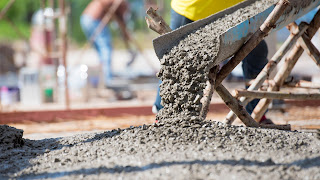Common Mistakes to avoid In Brick Masonry
Brick masonry is one of the oldest and most reliable construction techniques used to build durable structures. It involves laying bricks in a specific pattern using mortar, which is a mixture of cement, sand, and water. While brick masonry is a straightforward process, it is important to avoid certain common mistakes that can compromise the quality and durability of the structure. In this blog, we will discuss some of these mistakes and how to avoid them.
Before we delve into common mistakes, it is important to understand cement's role in brick masonry. Cement is a crucial component of the mortar used to bind bricks together. The cement manufacturing process involves heating raw materials such as limestone, clay, and shale at high temperatures to produce a fine powder called cement. This powder is then mixed with sand and water to make mortar, which is used in brick masonry.
Cement products such as Wonder Cement are known for their strength and durability, making them an ideal choice for brick masonry.
Now, let's look at some common brick masonry mistakes:
Poor quality mortar:
The quality of brick masonry mortar is crucial to the durability of the structure. Poor quality mortar can result in weak joints that can easily crack and crumble. To avoid this, always use high-quality cement products and mix the mortar according to the manufacturer's instructions.
Incorrect brick placement:
Bricks should be laid in a specific pattern to ensure structural integrity. Incorrect brick placement can result in weak points in the structure that can compromise its stability. Always follow the recommended bricklaying pattern and ensure that each brick is properly aligned and level.
Improper joint thickness:
The thickness of the brick joints should be consistent throughout the structure. Inconsistent joint thickness can weaken the structure and crack it. Always use a consistent amount of mortar when laying each brick to ensure even joint thickness.
Inadequate curing time:
Curing is the process of allowing mortar to dry and harden before applying any load to the structure. Inadequate curing time can result in weak joints that can easily crack and compromise the structure's stability. Always follow the recommended curing time for the mortar type used.
Poor drainage:
Brick masonry structures are susceptible to water damage if proper drainage is not provided. Water can seep into the structure through the joints and cause damage over time. Always ensure proper drainage to prevent water damage.
In conclusion, brick masonry is a reliable construction technique that lasts for decades if done correctly. By avoiding these common mistakes and using high-quality cement products such as Wonder Cement, you can ensure that your brick masonry structure is strong, durable, and able to withstand time.
If you're looking for high-quality cement products to use in your next brick masonry project, look no further than Wonder Cement. Their cement manufacturing process results in strong and durable cement products perfect for any construction project. Visit the website today to learn more about their products and how they can help you build the structures of your dreams.


.jpg)

Comments
Post a Comment